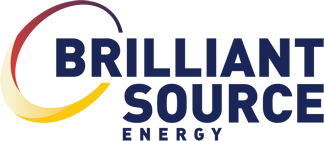In the competitive commercial landscape, managing operational costs is vital for business success. Utility bills can be a significant part of these expenses, yet they often include hidden fees, incorrect charges, or inefficiencies that go unnoticed. Conducting regular utility bill audits helps uncover these issues, providing an opportunity for businesses to save money and improve their energy management.
Understanding Utility Bill Audits
A utility bill audit is a detailed review of your business’s energy, water, and gas bills. It examines historical billing data to identify discrepancies, billing errors, and overcharges that may have occurred. In many cases, these audits reveal areas where businesses are being overcharged, offering an opportunity for immediate cost recovery.
Benefits of Conducting Utility Bill Audits
- Cost Recovery: Many businesses find that they are owed significant refunds due to overbilling or errors in their utility bills. A thorough audit can recover these costs, often leading to substantial savings.
- Error Correction: Billing mistakes such as incorrect tariff rates, meter reading errors, or duplicate charges are common. Audits identify and correct these issues, ensuring that you only pay for what you’ve actually used.
- Improved Energy Management: In addition to identifying errors, utility bill audits provide insight into how your business uses energy. This information can be used to optimize energy consumption and reduce waste, leading to long-term cost reductions.
- Sustainability Goals: A utility bill audit can also help identify areas where your business can reduce its energy footprint, supporting sustainability initiatives and enhancing your corporate social responsibility (CSR) profile.
The Utility Bill Audit Process
- Data Collection: The first step in a utility bill audit is gathering data, including all utility bills for the past 12-24 months. This data forms the foundation for the audit.
- Analysis: The audit team will analyze your bills, checking for billing errors, incorrect tariff applications, meter reading discrepancies, and any other potential issues.
- Error Identification: Any errors or overcharges will be documented. This may include rate misclassification, late payment fees that were incorrectly applied, or charges for services you did not receive.
- Negotiation for Refunds: Once errors are identified, the next step is to work with your utility provider to secure refunds or credits. This negotiation ensures that you are reimbursed for any overcharges.
- Recommendations for Optimization: The audit doesn’t stop with identifying errors. The audit team will also provide recommendations on how to optimize your energy usage and reduce future costs.
Case Study: Success through Utility Bill Audits
One example involves a medium-sized manufacturing business that partnered with Brilliant Source Energy for a utility bill audit. The audit uncovered a series of overcharges related to incorrect meter readings, resulting in a refund of $25,000. Additionally, the audit identified areas where the business could reduce energy consumption, cutting energy costs by 15% annually through targeted efficiency upgrades.
How Often Should You Conduct a Utility Bill Audit?
For businesses with significant energy usage, we recommend conducting a utility bill audit at least once a year. Energy markets and tariffs change frequently, and regular audits help ensure that your business is always paying the correct rates and avoiding unnecessary fees.
Conclusion
Utility bill audits are an essential tool for businesses looking to reduce operational costs and improve energy management. By identifying errors, recovering overcharges, and optimizing energy usage, businesses can unlock substantial savings. Regular audits not only improve the bottom line but also support sustainability efforts, helping businesses operate more efficiently and responsibly.
Next Steps: Interested in learning how a utility bill audit can benefit your business? Contact Brilliant Source Energy today or explore our Energy Efficiency Solutions to discover additional ways to reduce your operational costs.







